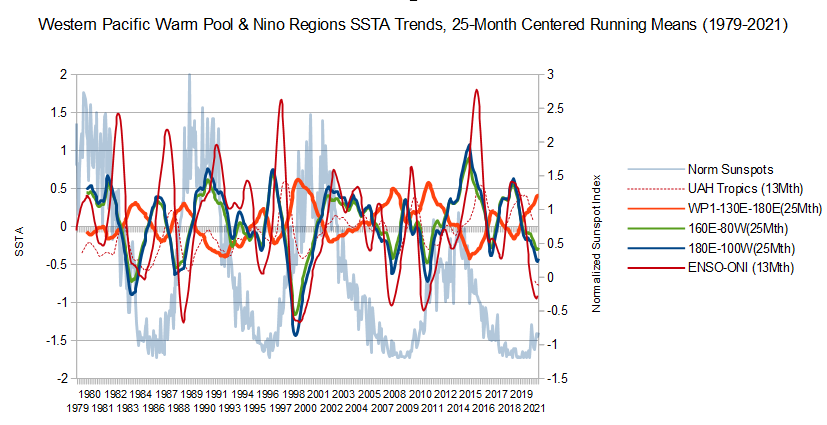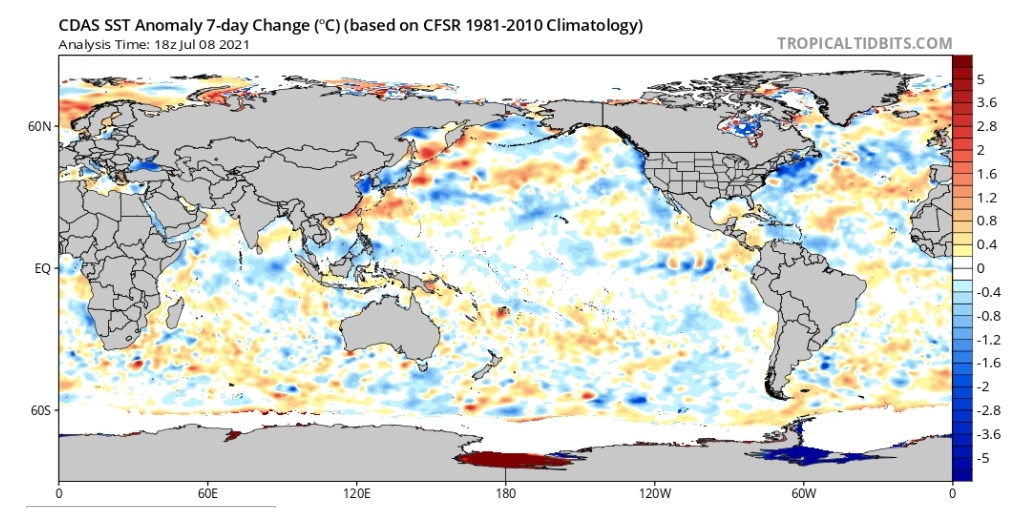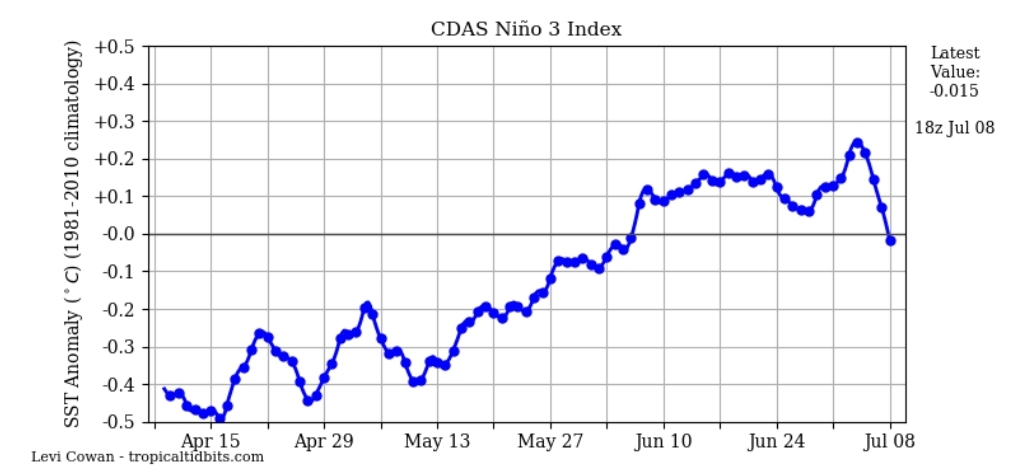|
|
Post by nonentropic on Jul 8, 2021 20:34:06 GMT
The temperature drops fast at night that is the result of the sun going away. Absolute zero never but really cold a day or three. Look at the poles for further evidence and they have a heat pump from the tropics.
|
|
|
|
Post by missouriboy on Jul 8, 2021 22:49:35 GMT
I say with no external heat source - aka old sol - everybody will need longer underwear The Earth's atmosphere has some capacity to hold in heat but not much of one. A relatively simple calculation would show that the Earth's surface temperature would drop by a factor of two about every two months if the Sun were shut off. The current mean temperature of the Earth's surface is about 300 Kelvin (K). This means in two months the temperature would drop to 150K, and 75K in four months. To compare, the freezing point of water is 273K. So basically it'd get too cold for us humans within just a few weeks. Some bacteria seem to be capable of surviving at extremely cold temperatures in space, so there would probably still be some limited bacterial life left on Earth. But anything else would die pretty quickly (even the rats  . We could probably survive if we went deep underground where the Earth's internal heat is higher or if we built totally isolated habitation domes, but at the moment I don't think we're capable of something like that on any appreciable scales. Code, if you scroll up 4 or 5 posts to your original post quoted here, somehow or another it shows a reference in the boxed in quotes area to a July 6 7:39 post from me which says the earth is lacking an external energy source. That thought didn't come from me on July 6 or anytime.
One thing I have found is that if you don't take care to scroll all the yay down when you start your reply to a quote, some of the quote may be omitted.
Code's "no external heat source" came from my portion of the post. I was merely introducing the argument that the sun is the primary source of heat for the tropical Pacific Ocean. On average, the Western Pacific Warm Pool (west of about 160 east longitude) is several degrees warmer than the eastern tropical Pacific ... largely because during much of the the year cooler, upwelling waters from the Humboldt Current are driven westward by strong trade winds, and are heated by solar radiation during their journey. At intervals associated with a weakening of the trade winds (El Nino), these warmer western waters move back to the east releasing large quantities of heat to the troposphere overlying the central and eastern Pacific Ocean. These events are large enough that they show up as distinct spikes in the UAH lower troposphere temperature anomalies. SSTA monthly data collected from Climate4you for three tropical Pacific transects (130E-80W, 160E-80W & 180W-100W) show that SSTAs for the Western Pacific Warm Pool (130E-160E) trend upward from 1979 to about 1998, after which the trend is essentially flat through 2010. This is consistent with the UAH lower troposphere temperature anomaly trends in the same time periods. Since 2010, WWP SSTAs have not yet returned to these higher values, even though global UAH temperatures spiked in 2016 coincident with the 2016 El Nino.  |
|
|
|
Post by code on Jul 9, 2021 0:02:17 GMT
|
|
|
|
Post by duwayne on Jul 9, 2021 0:36:55 GMT
The temperature drops fast at night that is the result of the sun going away. Absolute zero never but really cold a day or three. Look at the poles for further evidence and they have a heat pump from the tropics. So I think our difference of opinion as to whether the heat would be gone from the atmosphere in a few days if the sun were to disappear is one of semantics. You are not using the word heat in a scientific sense.
In Arizona in January the temperature will sometimes hit 35F at night and 70F in the day due to the low humidity. Golf will be cancelled early in the day due to frost which means the earth's surface is even cooler than the air. The earth's surface cools because it continues to emit high rates of LWIR even after the incoming solar radiation stops.
The air temperature follows the earth surface temperature. That's why the UAH satellite temperature measurements of the troposphere are used as a proxy for the earth's surface temperatures. The UAH temperatures are measured day and night.
Because air has weight, the bottom of the air column is under pressure. As you go up, the pressure is less and less. As a result the temperature is less and less per the lapse rate and gas laws. Convection (wind) can move air around to temporarily disrupt the lapse rate, but the air will work to get the lapse rate back.
|
|
|
|
Post by code on Jul 9, 2021 2:42:05 GMT
|
|
|
|
Post by code on Jul 9, 2021 2:50:54 GMT
I say with no external heat source - aka old sol - everybody will need longer underwear
The Earth's atmosphere has some capacity to hold in heat but not much of one. A relatively simple calculation would show that the Earth's surface temperature would drop by a factor of two about every two months if the Sun were shut off. The current mean temperature of the Earth's surface is about 300 Kelvin (K). This means in two months the temperature would drop to 150K, and 75K in four months. To compare, the freezing point of water is 273K. So basically it'd get too cold for us humans within just a few weeks. Some bacteria seem to be capable of surviving at extremely cold temperatures in space, so there would probably still be some limited bacterial life left on Earth. But anything else would die pretty quickly (even the rats  . We could probably survive if we went deep underground where the Earth's internal heat is higher or if we built totally isolated habitation domes, but at the moment I don't think we're capable of something like that on any appreciable scales.
Code, if you scroll up 4 or 5 posts to your original post quoted here, somehow or another it shows a reference in the boxed in quotes area to a July 6 7:39 post from me which says the earth is lacking an external energy source. That thought didn't come from me on July 6 or anytime.
One thing I have found is that if you don't take care to scroll all the yay down when you start your reply to a quote, some of the quote may be omitted.
Thanks Duwayne |
|
|
|
Post by acidohm on Jul 9, 2021 8:54:06 GMT
Cool wavy anomalies showing again at surface on 7 day charts Note also the recent cooling of GS of US Eastern coast. Not an insignificant development if only a small time frame.  Regions 1+2 & 3 are showing drops.   |
|
|
|
Post by code on Jul 9, 2021 12:42:53 GMT
I'm giddy this morning...planning on beefing up the insulation under the house from R-19 to R-30.
|
|
|
|
Post by missouriboy on Jul 9, 2021 13:19:54 GMT
Cool wavy anomalies showing again at surface on 7 day charts Note also the recent cooling of GS of US Eastern coast. Not an insignificant development if only a small time frame.  Regions 1+2 & 3 are showing drops.   Acid. I cannot see your images. Any idea why? |
|
|
|
Post by blustnmtn on Jul 9, 2021 13:40:01 GMT
Cool wavy anomalies showing again at surface on 7 day charts Note also the recent cooling of GS of US Eastern coast. Not an insignificant development if only a small time frame.  Regions 1+2 & 3 are showing drops.   Acid. I cannot see your images. Any idea why? I can see them!!! Something at your end Mo’boy. What browser? |
|
|
|
Post by Sigurdur on Jul 9, 2021 13:59:23 GMT
I saw and can see Acids images.
It was a trip worth taking. 😌
|
|
|
|
Post by acidohm on Jul 9, 2021 14:36:05 GMT
Missouriboy, I'm using the Web page Walnut suggested, I'm sorry it doesn't work for you 😕
|
|
|
|
Post by missouriboy on Jul 9, 2021 14:45:11 GMT
Acid. I cannot see your images. Any idea why? I can see them!!! Something at your end Mo’boy. What browser? Chrome. Is it time to change to firefox? Or is there a small tweek I can make in the interim? |
|
|
|
Post by missouriboy on Jul 9, 2021 14:46:48 GMT
Now I see them. What happened?
|
|
|
|
Post by missouriboy on Jul 9, 2021 14:50:26 GMT
I'm giddy this morning...planning on beefing up the insulation under the house from R-19 to R-30. Dig a root cellar too. And let us know how it's going.  I might need dynamite, and that is tough on footings. |
|